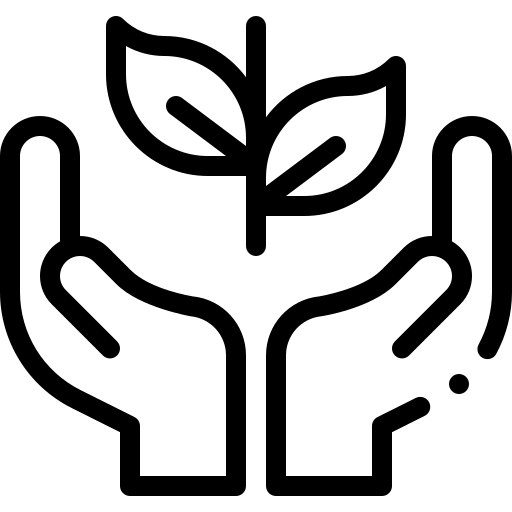Trip Overview
The Manaslu Circuit Trek leads adventurers through the secluded regions of north-central Nepal, commencing from Arughat Bazaar in Gorkha. Initiating at an elevation of 700 meters above sea level, the journey unfolds to its zenith at Larke Pass, soaring to an impressive 5,260 meters.
Renowned as one of Nepal’s celebrated trekking routes, the Manaslu Circuit Trek is classified as a Restricted Trail, necessitating a Special Permit for exploration. This expedition unveils the pristine splendor of the heartland of Nepal, where the local inhabitants, with their distinctive dialects, attire, and lifestyle, seldom comprehend even the Nepali language.
Designed for communal exploration, the trek mandates a minimum of two participants, ruling out solo endeavors. Initially recognized for camping treks, the route has evolved to incorporate teahouse accommodations in each town, offering basic standard services. Communication facilities, including Wi-Fi and telephone networks, are available in most towns. Optimal trekking seasons are Spring and Autumn.
Highlights of the Manaslu Circuit Trek include traversing the Budhi Gandaki gorge, meandering through picturesque valleys, encountering Gurung villages, and immersing in the amalgamation of Gurung and Tibetan cultures. The challenging Larkey La Pass (5,106m) and the breathtaking panoramic mountain vistas add to the allure of this trek.
Embarking on the trail, one begins by strolling along the banks of the Budhi Gandaki river, gradually ascending through valleys and villages. The trek’s difficulty level is categorized as demanding, necessitating 6-7 hours of daily walking to reach the next campsite, with over 8 hours required for the challenging Larkey Pass day. Culminating at Besi Sahar after conquering Larkey La Pass, the journey unfolds amidst the unique environment of Manaslu’s trails, showcasing majestic Himalayan ranges, high-altitude glacial lakes, and captivating flora and fauna. The confluence of these diverse landscapes solidifies Manaslu’s reputation as a premier destination for remote trekking in Nepal.
Tour Highlight
- Experience of driving over the bumppy road
- Explore Budhi Gandaki River valley
- Experience the Nepalese and Tibetan mixture culture
- Crossing Larkya La over 5215 meters
Trip Facts
Trip Itinerary Expand All
Arrival at Tribhuwan International Airport
Welcome to Nepal! We will receive you the airport and transport you to hotel.
Pre-trip meeting and sightseeing around Kathmandu valley
The day beings with a meeting and introducing with your trek and tour leader. After breakfast, we organize a short meeting at the hotel lobby. The meeting finalizes the preparation of the trek. In the meeting, you need to bring three copies of passport copy size photos, and travel insurance copy. Soon, the day tour will starts and on the tour visit most highlighted places of Kathmandu.
PASHUPATINATH TEMPLE
Pashupatinath Temple is one of the most visited and sacred places of Hindu. According to Hindu mythology, Pashupatinath is one of four Dham. It is not only a religious place also the cremation place. The dead body is burning with firewood in the bank of holy river Bagmati.
BOUDDHA STUPA
Bouddhanath Stupa is one of the biggest Buddhist shrines in the world. While touring in Buddha you can meet the monks, learn Buddhism, gather the information about Thankas, and its significants.
BHAKTAPUR DURBAR SQUARE
Bhaktapur Durbar Square is a royal palace built in centuries ago when Nepal had 22 and 24 state kingdom. The palace is famous with the name of fifty-five windows durbar, Nyatapol Mandir the tallest temple in Nepal. The Lion Gate, Golden Gates, The statue of King BhupatindraMalla and the pottery where the potter makes are the main attractions of Bhaktapur.
After finished the tour, the evening time is to review the luggage for the trek. If you interested you can walk around Thamel, choose the restaurant for dinner.
Drive to Machha Khola (900 m) via Arughat Bazaar Gorkha (640m) and Soti Khola (775m)
After breakfast, your guide will pick you up from your hotel and drive to Arughat, the starting point of the trek, via Dhading Besi. The road up to Tari Besi is a comfortable drive and from Tari Besi to Soti is through a winding dirt road. The road follows the Budhi Gandaki River to reach Arkhet Bazaar via Mangaltar and Simara through the river banks. And ascending road brings you to Soti Khola where we stay for the night. On a flat path, we reach Armala and through the forest trail you will reach Lapubesi and then the trail follows down to the riverbank of Budhi Gandaki, which will be on the Machha River.
Trek to Jagat (1,340m)
We continue on the trails which has some uphills and some downhills to Khani Goan crossing a few rivers to reach Khorla Besi. Following the narrow path, you reach a hot spring called Tatopani. Along the trail, you will see terraced rice fields and eventually reach Jagat.
Trek to Deng (1860m)
After breakfast, we ascended to Saguleri. It is a viewpoint of Sringi Himal (7,177m), continuing to Sirish Gaon. The trail goes through a bamboo forest. Following the upstream Deng River and arrive at Deng village.
Trek to Namrung (2,630 m)
Today is a bit more tough day than previous days, though we are enjoying the walking in landscape and cultivated areas. After a few hours of walking, we arrive at Ghap (2160m). Ghap welcomes with melodic sounds of a waterfall. After 4 hours of walking, we reach Namrung.
Trek Trek to Lho (3,200m)
The trail goes through areas scattered with cultivated fields after crossing the bridge over Budhi Gandaki. We cross the Hinan river and continue to Lho from there you can see Manaslu North and Mt. Manaslu and arrive at Lho Gaon.
Trek to Sama Gaon(3,500m)
Acclimatization and exploration day
Today is acclimatization and exploration day, as we are gaining altitude and it’s important to get used to the thin air. During the day, we can visit Pungyen Gompa or glacial Lake Birendra Tal (4-5 hours). Or, we can also trek to Manaslu Base Camp as a day hike.
Trek to Samdo (3,860 m)
We will enter the Stone Gate and cross the long stonewalls along the trail. Peak 29 can be seen very clearly. The side trip to Pungen Glacier gives close views of Mt. Manaslu and continues to meet Sama Gaon after 20min from Sama, where the overnight accommodation is.
Trek to Larke Phedi (4460m)/ Dharmasala
We walk to Dharmasala/ Larke Phedi (4460m). The guesthouse in Dharmasala is with basic facilities for meals and accommodation.
Cross Larkya La (5,215m) and trek to Bhimtang
Before the crack of dawn we set off for Larkya La pass through steep uphills. From the pass, you can see the amazing views of Himlung Himal (7,126m), Cheo Himal (6,820m), Gyagi Kung, Kang Kuru (6,981m) and the Annapurna II (7,937m). The trail then descends through moraines on a steep gradient, towards Bhimtang.
Trek to Gowa (2560m)
Having crossed Larkya La the previous day, this day will be very easy for you. A light climb brings us to paddy fields towards to Karcha La Pass and a descent to Gowa through rhododendron forests.
Trek Dharapani.
Trek to Dharapani
Drive back to Kathmandu by 4WD Jeep
Trip concludes.
The trip concludes – our airport representative will drop you at the Kathmandu international airport for your final flight departure from Nepal.
What Includes & Excludes
Includes
Accommodation
- Three Nights in Hotel Kathmandu in BB Plan
Meals
- Three meals (Breakfast, Lunch, and Dinner) during the trek.
- Breakfast is In Kathmandu Hotel
Guides and Porters
- Trekking Porters – We Assign a porter for each two trekkers.
- An English speaking local guide
Transports
- All ground transportation as per itinerary
- From and to the airport transfer to the hotel on a private tourist vehicle on your International arrival and departure.
Additional Services
- All government taxes and official expenses.
- Farewell dinner one night before the client’s final departure in a typical Nepali Restaurant with culture dance. Your guide will accompany you.
- Trekking/tour permits, entrance fees.
- Accommodation, foods, insurance, salary, equipment, and medicine for field staffs.
Excludes
- Anything not mentioned in the price includes.
- Personal trekking gears/equipment.
- Tips for trekking staff (Tipping is expected).
- Lunch and dinner in the city.
- All drinks including bottled/boiled water along the trekking route
- Visa fees and travel insurance.
- International airfare to and from Nepal.
Join the Departure
Guest Reviews
We highly recommend Broad Adventures they provided exceptional guidance on our Everest Base Camp trek. Our guide’s Gynau’s professionalism,...
Read More...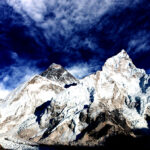
David Neufeld
CanadaIf you are looking for a tour to see the Mt Everest base camp look no further. I have...
Read More...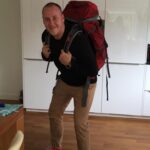
Tim Troost
AustraliaI was looking at an exotic trek adventure. After looking for a bunch of places to go I thought...
Read More...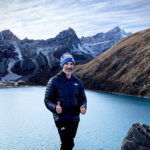
Keith B.
USAKeshab was our most gracious and amiable guide in Kathmandu and to Everest basecamp. My wife accompanied me on...
Read More...
Ken Byers , Nevada
USAMy son and I went for trekking in Nepal in 2009, and we were lucky to have Keshab Khanal...
Read More...
Dr. Raphael Hemmendinger
Jerusalem , IsraelIn 2005 I came to Nepal for the second time, this time whith a very specific queste. I wanted...
Read More...
Richard Rijken
Amsterdam , NetherlandsI was always willing to go to the Himalayas and explore some of the beauties hidden in the sacred...
Read More...
John Peter
Manchester , United KingdomNamaste! This was my first time to Nepal, and I had an amazing time on my trek. From the...
Read More...
David Patrician
Hamburg , GermanyI was on trekking from 24.10.10 to 5.11.10 in the half part of Annapurna circuit from Bhulbhule to Jomsom....
Read More...
Vaya Bairaba
Athens , GreeceImportant Info
Ultimate Guides for Manaslu Circuit Trek
The Manaslu Circuit Trek is a stunning and less crowded alternative to the popular Annapurna and Everest regions in Nepal. It offers incredible scenery, rich cultural experiences, and a challenging trek around the world’s eighth-highest peak, Mount Manaslu. Here’s an ultimate guide to help you plan your trek:
1. Overview of the Manaslu Circuit Trek
- Duration: 14-18 days
- Maximum Elevation: Larkya La Pass at 5,160 meters (16,930 feet)
- Trek Difficulty: Strenuous
- Best Seasons: March to May (spring) and September to November (autumn)
- Required Permits:
- Manaslu Restricted Area Permit (MRAP)
- Annapurna Conservation Area Permit (ACAP)
- Manaslu Conservation Area Permit (MCAP)
- A registered guide is mandatory for this trek
2. Preparation and Packing for Manaslu Circuit Trek
- Physical Fitness: Adequate preparation and physical fitness are essential. Engage in cardio exercises, strength training, and practice hiking.
- Packing List:
- Clothing: Layered clothing system, including base layers, mid-layers, and outer layers (waterproof and windproof). Down jacket for high altitudes.
- Footwear: Sturdy trekking boots, comfortable trekking socks, and camp shoes.
- Gear: Trekking poles, sleeping bag (rated for -10°C or lower), backpack (50-70 liters), and daypack.
- Accessories: Sunglasses, sunscreen, hat, gloves, headlamp, water purification tablets, first aid kit, toiletries, and personal items.
3. Accommodation and Food
- Teahouses: Basic lodges providing accommodation and meals.
- Meals: Dal Bhat (rice with lentil soup), noodles, soups, and Tibetan bread are common. Carry some snacks and energy bars.
4. Health and Safety in Manaslu Circuit Trek
- Altitude Sickness: Acclimatize properly, stay hydrated, and ascend slowly.
- Insurance: Obtain travel insurance that covers high-altitude trekking and emergency evacuation.
- Water: Purify all drinking water to avoid waterborne illnesses.
5. Cultural Sensitivity
- Respect Local Customs: Dress modestly, ask for permission before taking photos, and respect religious sites.
- Learn Basic Phrases: Knowing a few words in Nepali or local languages can enhance your experience.
6. Environmental Responsibility
- Leave No Trace: Carry out all trash, use biodegradable soap, and avoid single-use plastics.
- Stay on Trails: Protect fragile ecosystems by sticking to marked paths.
7. Tips for a Successful Trek
- Hire a Guide and Porter: Supports the local economy and ensures safety.
- Stay Informed: Weather conditions can change rapidly; stay updated.
- Be Flexible: Trekking in remote areas can present unexpected challenges, so flexibility is crucial.
Final Thoughts
The Manaslu Circuit Trek is an adventure of a lifetime, offering unparalleled natural beauty and cultural experiences. Proper preparation and respect for the local environment and communities will make your trek safe and enjoyable. Happy trekking!
Get Trip PDF file
Why travel with
Broad Adventures
Since 2010, we have curated unique itineraries that offer once-in-a-lifetime experiences, ensuring every trip is filled with joy and adventure. Our focus on the fun factor and the right amount of challenge allows you to achieve a profound sense of personal accomplishment, all while enjoying the camaraderie of like-minded travelers.
Small-Group Adventures
Join an intimate group of like-minded travelers who share your passion for discovering the world's wonders safely and confidently. Our small group settings foster a deeper connection with your fellow explorers and the incredible destinations we visit.
Expert Local Guides
We exclusively employ local guides and porters for their unparalleled knowledge and expertise. Their insights and firsthand experiences enrich your journey, giving you a deeper understanding and appreciation of the local culture, history, and environment.
Responsible for Tourism
Your safety is our utmost priority. Our dedicated team of trained professionals ensures the highest standards of care, including providing fresh and hygienic meals, comprehensive First Aid supplies, and round-the-clock communication services. We are committed to responsible tourism practices, emphasizing the importance of sustainable and ethical travel.
Health and Saftey
Promoting responsible tourism is essential, as it calls for a collective effort from everyone involved in the industry. By prioritizing health and safety, we ensure that each journey is not only enjoyable but also respectful of the destinations and communities we visit.
How can we help you?
- City Tour Equipment
- City Tour Season
- Climbing Equipment
- Climbing Season
- General Questions
- Guide and Staffs
- Nepal Overview
- Tipping
- Transportations
- Trekking Equipment
- Trekking Season
- VISA info
- Weather and Temperature
Do you provide any equipment for the trek?
Broad Adventure provides you a basic equipment like a Sleeping Bag and a down Jacket, for the tea-house trek. And for the climbing trip, we provide the basic equipment. For a camping trek check it once including the section.
What is the time zone of Nepal?
NPT (UTC+05:45)
What cultural attractions can I explore in Kathmandu?
Kathmandu is home to historical sites like Durbar Square, Swayambhunath (Monkey Temple), and Pashupatinath Temple. These landmarks showcase Nepal’s rich cultural and religious heritage, providing visitors with a deep insight into the country’s history.
What are the must-visit cities in Nepal?
Kathmandu, Pokhara, Bhaktapur, and Patan are popular cities offering rich cultural experiences. Each city has its own unique charm, historical sites, and vibrant local markets.
Do you provide any equipment for the trek?
Broad Adventure provides you a basic equipment like a Sleeping Bag and a down Jacket, for the tea-house trek. And for the climbing trip, we provide the basic equipment. For a camping trek check it once including the section.
Do I need to tip the guide and porters? What is the standard tip?
Tips is expected by your team members and normally the standard is 10% of your total trip cost.
What is the climbing season in Nepal?
The main climbing seasons are spring (April to May) and autumn (September to November). During these times, the weather is more stable, providing safer and more favorable conditions for climbing expeditions.
Are there other mountains in Nepal suitable for climbing?
Yes, Nepal is home to numerous trekking peaks and mountains suitable for climbing, such as Island Peak, Mera Peak, and Lobuche East. These peaks offer a challenging yet rewarding experience for climbers of various skill levels.
Can I climb Mount Everest as a tourist?
Climbing Mount Everest requires significant preparation, experience, and permits. Most climbers join organized expeditions with experienced guides. Climbing Everest is a serious undertaking that demands physical fitness, technical skills, and a high level of commitment.
Do I need to tip the guide and porters? What is the standard tip?
Tips is expected by your team members and normally the standard is 10% of your total trip cost.
What is the voltage and plug type used in Nepal?
The standard voltage is 230V, and the plug type is the Europlug (Type C) and the British-style plug (Type D). It’s advisable to bring adapters if necessary.
What is the voltage and plug type used in Nepal?
The standard voltage is 230V, and the plug type is the Europlug (Type C) and the British-style plug (Type D). It’s advisable to bring adapters if necessary.
Is it necessary to get travel insurance for Nepal?
Yes, travel insurance is highly recommended, especially for trekking and adventure activities. Ensure that your insurance covers medical emergencies, evacuation, and trip cancellations.
What languages are spoken in Nepal?
The official language is Nepali, but English is widely understood in tourist areas. Additionally, various ethnic groups have their own languages.
What is the currency used in Nepal, and are credit cards widely accepted?
The official currency is the Nepalese Rupee (NPR). While major cities and tourist areas accept credit cards, it’s advisable to carry cash in remote areas. ATMs are available in urban centers.
How can I get around within cities in Nepal?
Transportation options include taxis, rickshaws, and local buses. Walking is also a great way to explore the cities, especially in the old quarters. Many cities have well-preserved historic areas, and navigating them on foot allows for a more immersive experience.
What cultural attractions can I explore in Kathmandu?
Kathmandu is home to historical sites like Durbar Square, Swayambhunath (Monkey Temple), and Pashupatinath Temple. These landmarks showcase Nepal’s rich cultural and religious heritage, providing visitors with a deep insight into the country’s history.
Can I climb Mount Everest as a tourist?
Climbing Mount Everest requires significant preparation, experience, and permits. Most climbers join organized expeditions with experienced guides. Climbing Everest is a serious undertaking that demands physical fitness, technical skills, and a high level of commitment.
Are permits required for trekking in Nepal?
Yes, trekking permits are required for most trekking regions. The type of permit depends on the specific trekking area. It’s important to obtain the necessary permits from the respective authorities to support local conservation and management efforts.
When is the best season for treks in Nepal?
From March to mid-June and September to December is the best season for treks.
What is the fitness required for the treks?
Generally, to trek in Nepal we should have good physical and health conditions. And also able to walk 4- 7 hours in day at a high altitude with your little backpack.
Do you pick me up at the Airport upon my arrival?
Yes, our airport representative welcomes you at the airport and transfers you to the hotel in a private tourist vehicle.
Does my guide/porter speak English?
They speak English. All the guides are professional and due to their professionalism, they speak good English. The guide’s English is enough to explain the local culture, activities, and religions.
Are the treks and tours secured? What about the security?
Providing security to our clients is our principal. The government-licensed holder guides and other crew members are carefully assigned for your trip. Even though, would like to counsel you to take care of your equipment, and bags. If you doing a tea-house trek your accommodation is in a local guesthouse, where you have to be a precaution yourself at all times. And if you are on a camping trek always keep your bags inside the tent and while at nighttime please keep your bag in the middle of the tent. The camping leader assigns a Sherpa as a guard throughout the nighttime.
What sort of ground transportation do you use?
Normally we assign a car for up to 2 people and a Jeep for up to 5 people and then a bus for up to 14 PAX and Coster and Sutlej Bus depending on group size. There are some trekking routes, which are dirt roads for them we assign 4WD Jeeps. It also depends on what services you opt for.
Are the staff insured by your company?
Yes, all of the staff and crew members are insured.
Should I need to join the group?
Joining a group depends on your booking and the option that you choose. If you have booked for Private Trip then obviously you will not join. Otherwise, normally the same trip departs on the same day then the group will join.
Do you arrange a private trip?
Yes, of course, we will arrange a private tour.
How big is a group size?
We will try to arrange a small group of willing people, which immortalize the treks. Normally we encompass 12 -16 people in a group. (This is not to apply to those who want to do a Private Trip, no minimum and maximum for them.)
Is the drinking water okay? Or do I need to use tablets?
For drinking water you can buy bottled water and purified mineral water on tea-house treks and city tours. And in the camping trek, the camping cook provides you with boiled water. For some cases of remote area trekking it would be better to have some purification tablets that you can buy in Kathmandu.
What are the accommodations and meals like?
All the meals that you provided are hygienic and fresh. While you are on a camping trek you get meals prepared by a professional camping cook. And if you are doing a tea-house trek you will get the main course as like in the cities. For accommodation on the camping trek, you will have a tent with good-quality mattresses and a sleeping bag. And if you are on a tea-house trek you will normal twin-sharing room with basic facilities with a warm mattress and blanket, and also we provide a sleeping bag if you need it.
Is the shower facility during the tour/trek?
Yes, you can have a shower during the trek. In the camping trek, you will get a shower in a shower tent which is provided 3-4 times in the whole trek, depending on the duration of the trek. And in a tea-house trek, we will provide you attached room where possible and for the rest of town, you will pay for a shower.
Do you provide any equipment for the trek?
Broad Adventure provides you a basic equipment like a Sleeping Bag and a down Jacket, for the tea-house trek. And for the climbing trip, we provide the basic equipment. For a camping trek check it once including the section.
Is there any possibility of communicating in my hometown?
Yes, you can. In the Everest and Annapurna regions, you can connect via Phone, or Internet both available in most of the town and, in some remote routes, you may need to use a satellite phone that is carried by your trek guide or also get in the local town.
Can I charge the batteries of cameras, and phones?
Yes, you can charge your devices, but recommended you bring your plugs, and chargers and also do not leave unattended anything while charging in a lobby or somewhere in the trekking guesthouse. And if you are on a camping trek it’s quite hard to charge the phone so we advise you to bring a portable charge.
Are there any health precautions I should take before traveling to Nepal?
Vaccinations for diseases like typhoid, hepatitis, and tetanus are advisable. Altitude sickness prevention measures should be considered for high-altitude treks.
How can I find a reliable trekking guide in Nepal?
Reliable guides can be found through licensed trekking agencies, recommendations from fellow travelers, or by checking with the Nepal Tourism Board. Ensure that your guide has the necessary permits and is experienced in the chosen trekking region
Is hiring a local guide recommended for exploring Nepal?
Yes, hiring a local guide is highly recommended, especially for trekking and exploring remote areas. Guides provide valuable insights into the culture, history, and geography of the region, ensuring a safer and more enriching experience.
Is hiring a local guide recommended for exploring Nepal?
Yes, hiring a local guide is highly recommended, especially for trekking and exploring remote areas. Guides provide valuable insights into the culture, history, and geography of the region, ensuring a safer and more enriching experience.
Is Nepal a safe country for tourists?
Yes, Nepal is considered safe for tourists. However, like any travel destination, it’s essential to follow common-sense safety practices and stay updated on travel advisories. Local people are welcoming, and the country values its reputation as a safe and friendly destination.
What is the best time to visit Nepal?
The best time to visit Nepal is during the spring (March to May) and autumn (September to November) seasons when the weather is generally favorable for outdoor activities. During these periods, the skies are clear, and the temperatures are moderate.
What makes Nepal a popular tourist destination?
Nepal is renowned for its stunning Himalayan landscapes, rich cultural heritage, diverse wildlife, and warm hospitality. The country offers a unique blend of adventure, spirituality, and natural beauty.
What is the standard tip?
Tipping is subjective so it depends on your satisfaction. However, the standard is about 20% of the trip cost you can share with the staff.
Do I need to tip the guide and porters? What is the standard tip?
Tips is expected by your team members and normally the standard is 10% of your total trip cost.
Do you provide any equipment for the trek?
Broad Adventure provides you a basic equipment like a Sleeping Bag and a down Jacket, for the tea-house trek. And for the climbing trip, we provide the basic equipment. For a camping trek check it once including the section.
Are permits required for trekking in Nepal?
Yes, trekking permits are required for most trekking regions. The type of permit depends on the specific trekking area. It’s important to obtain the necessary permits from the respective authorities to support local conservation and management efforts.
Do I need a guide for trekking in Nepal?
While it’s not mandatory, hiring a local guide is highly recommended for safety, navigation, and cultural insights. Guides are familiar with the terrain, can provide valuable information about the region, and ensure a smoother trekking experience.
What are the most popular trekking destinations in Nepal?
The Everest Base Camp trek, Annapurna Circuit, Langtang Valley trek, and Manaslu Circuit are among the most popular trekking routes in Nepal. Each trek offers unique experiences, from breathtaking mountain views to encounters with diverse cultures.
When is the best season for treks in Nepal?
From March to mid-June and September to December is the best season for treks.
Do I need to tip the guide and porters? What is the standard tip?
Tips is expected by your team members and normally the standard is 10% of your total trip cost.
Can I extend my tourist visa to Nepal?
Yes, tourist visas can be extended at the Department of Immigration in Kathmandu or the Immigration Office in Pokhara. Extension fees and requirements vary, and it’s advisable to initiate the process a few days before the current visa expires.
What documents are required for a tourist visa on arrival?
Passport with at least six months validity, a completed visa application form (available at the airport), and two passport-sized photos are required. Additionally, visa fees must be paid in cash (USD or equivalent).
What are the types of visas available for tourists?
Tourist visas are available for duration ranging from 15 to 90 days. Extensions can be obtained within Nepal if needed. Other visa categories include business visas, student visas, and diplomatic visas, each with specific requirements.
How do I obtain a visa for Nepal?
Tourist visas for Nepal can be obtained upon arrival at Tribhuvan International Airport in Kathmandu or at various land entry points. Alternatively, you can apply for a visa at the Nepalese embassy or consulate in your home country before traveling.
What is the monsoon season in Nepal?
The monsoon season in Nepal runs from June to early September. During this time, the country receives heavy rainfall, particularly in the southern plains and the hilly regions. The monsoon brings lush green landscapes but can also cause landslides and flooding in some areas.
What is the time zone of Nepal?
NPT (UTC+05:45)

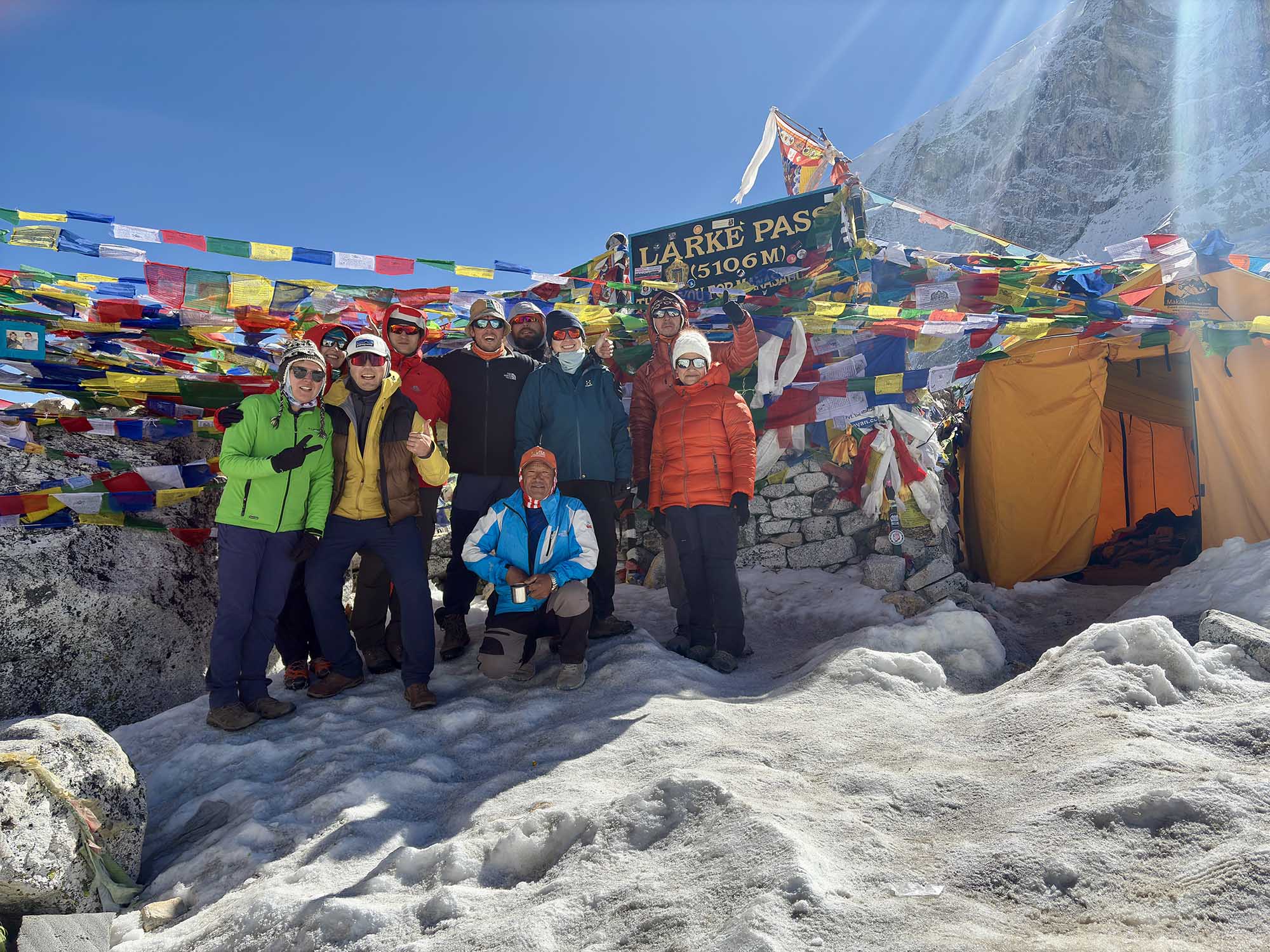
 Group Size: 1-15 PAX
Group Size: 1-15 PAX  Duration: 16 Days
Duration: 16 Days  Trip Start: Kathmandu
Trip Start: Kathmandu 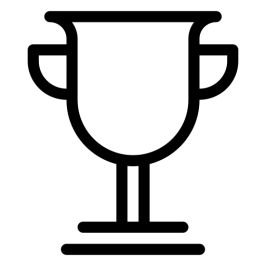 Trip End: Kathmandu
Trip End: Kathmandu  Average Dist. per Day: 12KM
Average Dist. per Day: 12KM  Average Time per Day: 6hrs
Average Time per Day: 6hrs  Trip Grading: Challenging
Trip Grading: Challenging 


